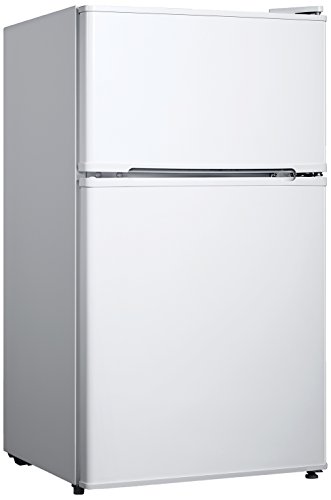
Fridge Uk
FollowOverview
-
Founded Date septiembre 9, 2008
-
Sectors Agronegocios
-
Posted Jobs 0
-
Viewed 24
Company Description
The Best Fridges And Freezers Tricks To Transform Your Life
Understanding Fridges and Freezers: The Essential Kitchen Appliances
Fridges and freezers are 2 of the most necessary devices in modern-day kitchens. These home appliances serve a vital function in food preservation and waste reduction by guaranteeing that disposable products remain fresh and safe for usage. This article explores the various types of fridges and freezers, their performances, and crucial considerations for selection and maintenance.
Types of Refrigerators
The marketplace provides a variety of refrigerator types, each developed to fulfill various consumer needs. Below is a list of the most typical types of fridges:

-
Top-Freezer Refrigerators
- Most common type.
- Freezer compartment is situated above the refrigerator area.
- Generally more budget-friendly and energy-efficient.
-
Bottom-Freezer Refrigerators
- Freezer is situated at the bottom.
- Allows easier access to fresh products at eye level.
- Often includes pull-out drawers for better company.
-
Side-by-Side Refrigerators
- Refrigerator and freezer areas are adjacent.
- Suitable for narrow kitchens and allows simple access to both compartments.
- Often comes with water and ice dispensers.
-
French Door Refrigerators
- Combines a bottom freezer with double doors at the top.
- Deals ample storage and trendy styles.
- Often consists of features like temperature-controlled drawers.
-
Compact Refrigerators
- Smaller sized size suitable for minimal spaces.
- Commonly utilized in dormitory, studio apartments, or as secondary fridges.
Table 1: Comparison of Refrigerator Types
| Type | Advantages | Drawbacks | Common Size |
|---|---|---|---|
| Top-Freezer | Economical, energy-efficient | Less convenient access to the freezer | 14-30 cu. ft. |
| Bottom-Freezer | Simpler access to fresh food | Freezer can be harder to arrange | 19-30 cu. ft. |
| Side-by-Side | Easy access, water/ice dispenser | Narrow vs. storage space | 22-30 cu. ft. |
| French Door | Elegant, roomy, organized | More expensive | 20-30+ cu. ft. |
| Compact | Space-saving, portable | Limited storage | 1.7-5.5 cu. ft. |
Types of Freezers
Freezers are an equally crucial device for food preservation. They come in various designs developed to fit different household requirements. Think about the following types:
-
Upright Freezers
- Run like a standard refrigerator with vertical storage.
- Easier to organize with racks and compartments.
-
Chest Freezers
- Large, horizontal style normally providing more storage space.
- Maintains temperatures better during power interruptions.
- More energy-efficient than upright models.
-
Portable Freezers
- Compact units ideal for outdoor activities or little areas.
- Typically utilized for camping journeys or as short-term storage.
Table 2: Comparison of Freezer Types
| Type | Advantages | Disadvantages | Normal Size |
|---|---|---|---|
| Upright Freezer | Simpler to organize | Less energy-efficient, more flooring area | 5-20 cu. ft. |
| Chest Freezer | Holds more items, energy-efficient | Harder to arrange | 5-25 cu. ft. |
| Portable Freezer | Compact and flexible | Minimal storage capability | 1-10 cu. ft. |
Key Features to Consider
When picking a fridge or freezer, customers must keep in mind numerous functions that can boost functionality:
- Energy Efficiency: Look for designs with the ENERGY STAR certification to minimize electrical energy costs.
- Storage Capacity: Evaluate storage requirements based upon family size and consuming habits.
- Temperature level Control: Some appliances provide digital controls for precise temperature settings.
- Adjustable Shelving: Customizable shelving permits ideal company.
- Water and Ice Dispenser: Offers convenience however can take up important space inside.
- Sound Level: Sound ratings can affect convenience, especially in open-concept homes.
Pros and Cons of Having a Fridge and Freezer
While Best Fridges and freezers are indispensable technologies, they also have specific benefits and disadvantages:
| Pros | Cons |
|---|---|
| Preserve food life expectancy and lower waste | Require routine upkeep |
| Allow bulk buying and meal prepping | Can be pricey to acquire and run |
| Deal convenience and quick access to food | Occupy substantial cooking area area |
Upkeep Tips
To ensure durability and optimum efficiency of fridges and freezers, think about the following upkeep pointers:
- Regular Cleaning: Clean the exterior and interior occasionally to prevent accumulation of dirt and germs.
- Inspect Seals: Inspect door seals frequently for leaks to keep efficiency.
- Temperature level Settings: Keep the fridge at 34-38 ° F and the freezer at 0 ° F for optimal food conservation.
- Thaw as Needed: Chest freezers must be defrosted frequently to keep efficiency.
- Clear Air Vents: Ensure that airflow isn’t blocked to improve energy efficiency.
Frequently asked questions About Fridges and Freezers
Q1: How long can food be stored in a freezer?A: Most foods can be kept in a freezer for a number of months. Meats and poultry frequently last 4-12 months, while vegetables can last approximately 8-12 months.
Q2: How typically need to I clean my fridge and freezer?A: It is recommended to clean your fridge and freezer every 3 to 6 months, or as required when spills happen. Q3: Can I put hot food straight in the fridge?A: It is suggested to cool hot food to room temperature level before positioning it in the fridge to avoid
raising the temperature inside the appliance. Q4: Why is my fridge running constantly?A: This could be due to a malfunctioning thermostat, blocked coils, or door seals that aren’t working effectively. Fridges and freezers are important
possessions to contemporary households, providing necessary services for food storage and conservation.
Comprehending the different types, functions, and maintenance requirements can assist consumers choose the right home appliances for their requirements and maximize their performance. Embracing energy-efficient models not only supports sustainable practices but likewise adds to significant savings on utility expenses, making informed choices more crucial than ever.
